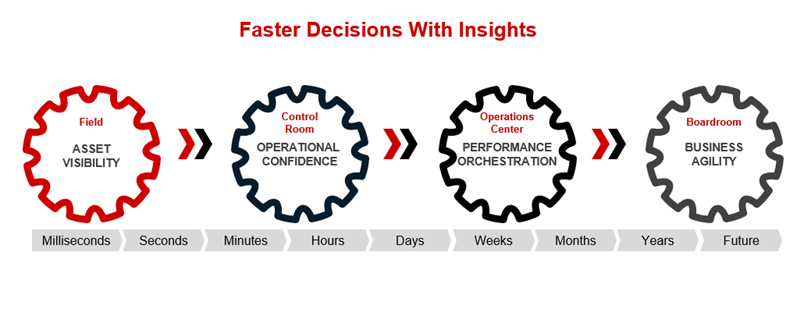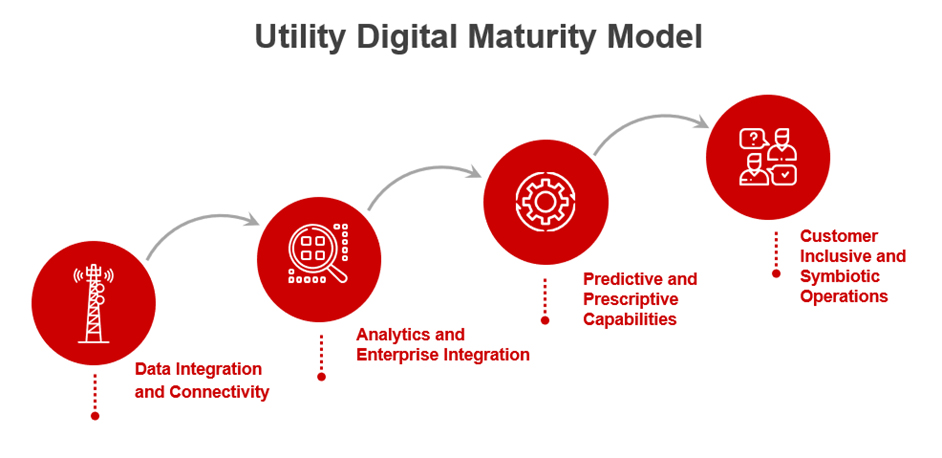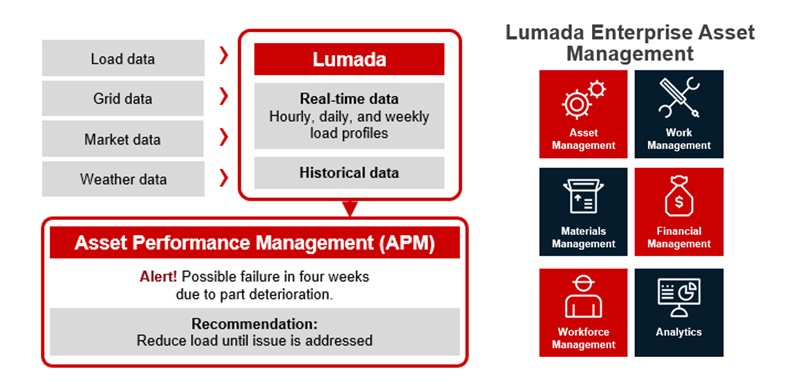Fueling the Future Power Network With Data


Where and when should a utility trim vegetation near power lines to best reduce the risk of wildfires? When is the most cost-effective time to take a wind turbine out of service for general maintenance? How can customers be convinced to charge their electric vehicle or consume energy at off-peak times that relieve pressure from the power grid? As power companies face such complex issues, the answers to these questions and the big question of providing a power-hungry world with greener energy, is requiring the industry to turn its massive stores of data into insights.

Utilities collect data from an enormous number of sources. It streams in from smart meters in customers’ homes. It comes from drones that capture images of hundreds of miles of power lines, satellites monitoring changing weather patterns, and external providers tracking the changing demographics of a neighborhood or region.
Capturing mounds of data has never been an issue for utilities; making sense of that data is a longstanding challenge. Today, utilities are embracing emerging technology to merge their data and gain deep insights that will fuel the future power network.
Some 75% of utilities are using advanced analytics, and 61% of those that are using the technology are developing improvements for the systems. According to a Capgemini study, the top-ranked technologies that energy and utility companies are investing in are a combination of digital technologies like IoT, automation, data analytics, hydrogen and storage technologies, and electrification, as well as artificial intelligence and machine learning (AI and ML).
Hitachi has a $10 billion presence in energy markets around the world. We have a laser focus on helping utilities gain a holistic view that blends data about consumer usage and patterns with historical and predictive data about infrastructure and environmental factors, to create insights that will help utilities reliably meet demand.
A Harvard Business Review study found that utilities fully appreciate the importance of merging data to gain the insights they need. When utilities were asked what projects they were likely to invest in over the next two years to improve the customer experience, 52.1% said: integrating customer data with other systems like ERP. This was the second highest choice after digital (online and mobile) transactions.

Combining information from smart meters in customer homes, electric charging ports, customer relationship management (CRM) systems, and financial transactions can bring compelling insights. Utilities need to understand consumption patterns and other matter so they can get proactively out in front of what customers want. This data can be used to develop special billing plans, which encourage customers to use power at nonpeak times, reducing the need for utilities to build out more costly infrastructure.
Hitachi aids utilities through our Lumada solutions for digital innovation. Lumada, which is coined from the words “illuminate” and “data,” helps companies: collect and process data, provide infrastructure for IoT and other data systems, establish a data catalog and a data lake, relay control data to other end systems, analyze the data using AI (at the edge or in the cloud), and visualize the results and insights.

Utilities around the world use Lumada to collect and aggregate data from dozens, if not hundreds of thousands of sources. Utilities, like every industry, face intense competition to hire data scientists. Our tools help data scientists apply their analytics faster and easier — or choose from many analytical models that come prebuilt in Lumada.
The life cycles of utility assets are becoming increasingly complex with the addition of renewable energy and the infrastructure needed to connect them to the power grid. The different life spans, maintenance requirements, and depreciation rates of these assets is a complex equation. For example, wind turbines produce hundreds of data points, such as increased turbine pressure, which can give clues when something is amiss.
In one case, a utility is using Hitachi analytics to determine when to perform maintenance on wind turbines on wind farms. The utility doesn’t want to perform such duties when wind prices are high and the machines are running well. By using information like energy price trends and weather predictions, the utility can determine the best time to take the turbine out of service.
The availability of powerful analytics is also making utilities reexamine what they can do with the data they are accumulating and find new value in it.
One compelling example is a European sports arena that is employing a first-of-its-kind rooftop microgrid. This microgrid is a self-sufficient group of energy sources, such as solar power, which powers the lights during games AND meets the energy needs of a given area, like a hospital or neighborhood. The key to it all is using a flexible control and energy management system to understand how the entire power system operates during different conditions: how it responds to supply and demand conditions in real time and in the context of other factors, such as energy prices.
THE most important product from the system is insights. The utility can see how a “prosumer” system, where individuals both consume and produce energy, operates under different conditions. Gaining such understandings through data — and acting on the learnings quickly — will be the key to developing power networks to meet complex consumer demands in the years to come.
Shamik Mehta is Director of Industry Solutions Marketing at Hitachi Vantara.

Shamik leads industry solutions marketing for Hitachi Digital Services, with deep expertise in energy, transportation and manufacturing. As well as +25 years working in semiconductors, renewable energy, IoT and data management and analytics.